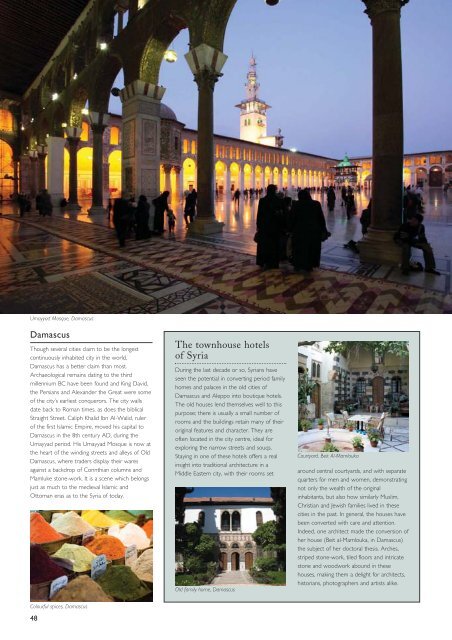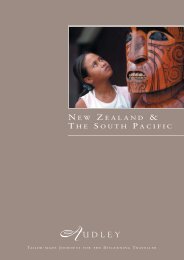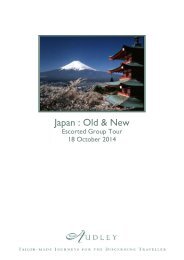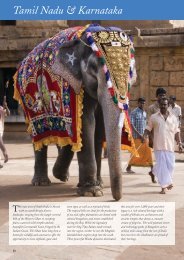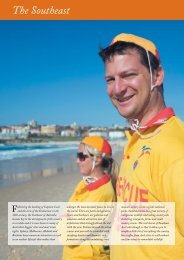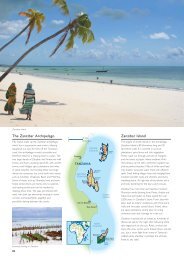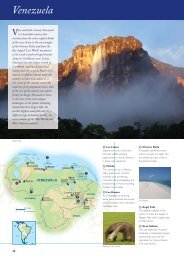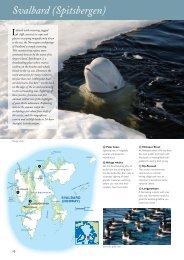Download - Audley Travel
Download - Audley Travel
Download - Audley Travel
Create successful ePaper yourself
Turn your PDF publications into a flip-book with our unique Google optimized e-Paper software.
Umayyad Mosque, Damascus<br />
Damascus<br />
Though several cities claim to be the longest<br />
continuously inhabited city in the world,<br />
Damascus has a better claim than most.<br />
Archaeological remains dating to the third<br />
millennium BC have been found and King David,<br />
the Persians and Alexander the Great were some<br />
of the city’s earliest conquerors. The city walls<br />
date back to Roman times, as does the biblical<br />
Straight Street. Caliph Khalid Ibn Al-Walid, ruler<br />
of the first Islamic Empire, moved his capital to<br />
Damascus in the 8th century AD, during the<br />
Umayyad period. His Umayyad Mosque is now at<br />
the heart of the winding streets and alleys of Old<br />
Damascus, where traders display their wares<br />
against a backdrop of Corinthian columns and<br />
Mamluke stone-work. It is a scene which belongs<br />
just as much to the medieval Islamic and<br />
Ottoman eras as to the Syria of today.<br />
The townhouse hotels<br />
of Syria<br />
During the last decade or so, Syrians have<br />
seen the potential in converting period family<br />
homes and palaces in the old cities of<br />
Damascus and Aleppo into boutique hotels.<br />
The old houses lend themselves well to this<br />
purpose; there is usually a small number of<br />
rooms and the buildings retain many of their<br />
original features and character. They are<br />
often located in the city centre, ideal for<br />
exploring the narrow streets and souqs.<br />
Staying in one of these hotels offers a real<br />
insight into traditional architecture in a<br />
Middle Eastern city, with their rooms set<br />
Old family home, Damascus<br />
Courtyard, Beit Al-Mamlouka<br />
around central courtyards, and with separate<br />
quarters for men and women, demonstrating<br />
not only the wealth of the original<br />
inhabitants, but also how similarly Muslim,<br />
Christian and Jewish families lived in these<br />
cities in the past. In general, the houses have<br />
been converted with care and attention.<br />
Indeed, one architect made the conversion of<br />
her house (Beit al-Mamlouka, in Damascus)<br />
the subject of her doctoral thesis. Arches,<br />
striped stone-work, tiled floors and intricate<br />
stone and woodwork abound in these<br />
houses, making them a delight for architects,<br />
historians, photographers and artists alike.<br />
Colourful spices, Damascus<br />
48


